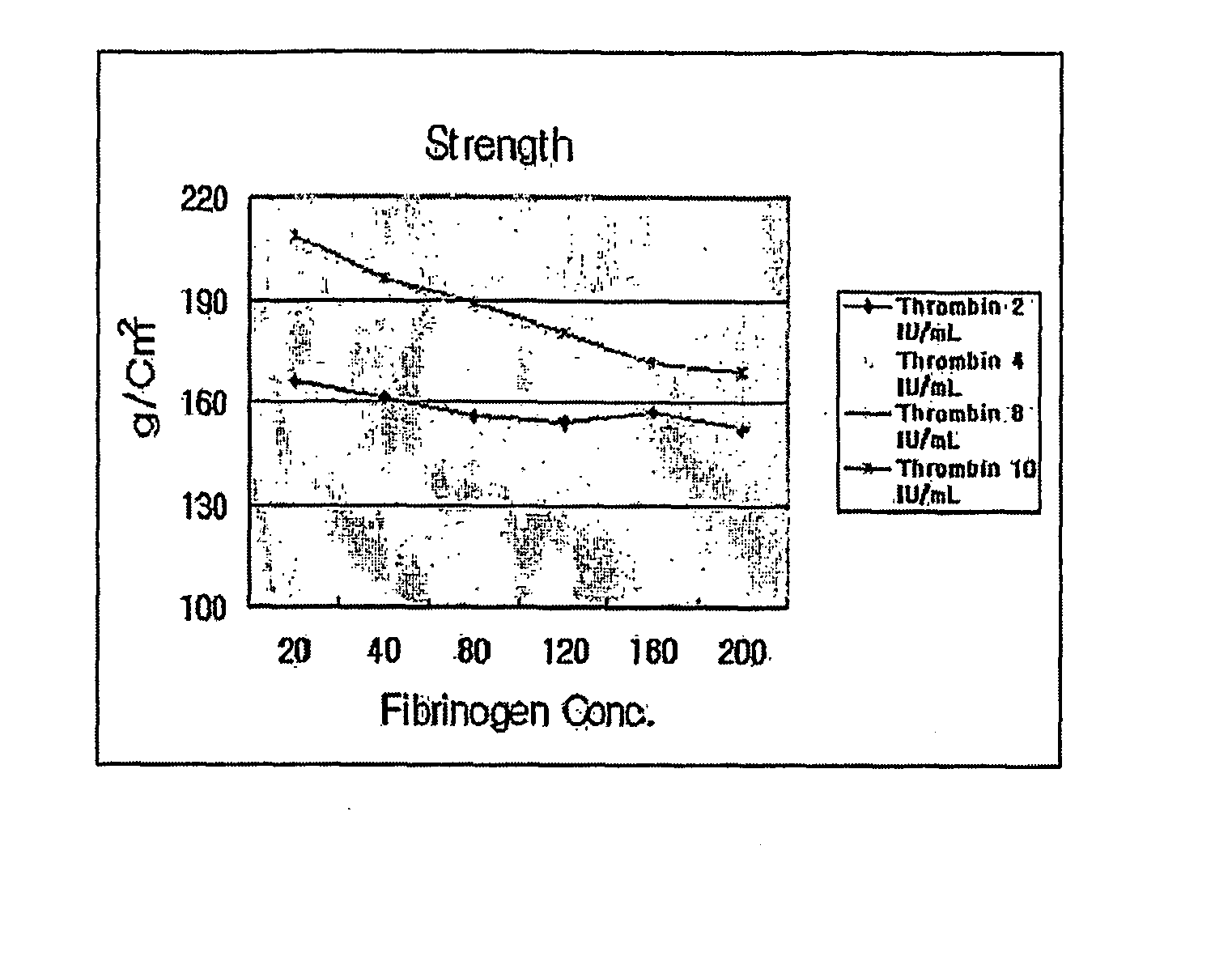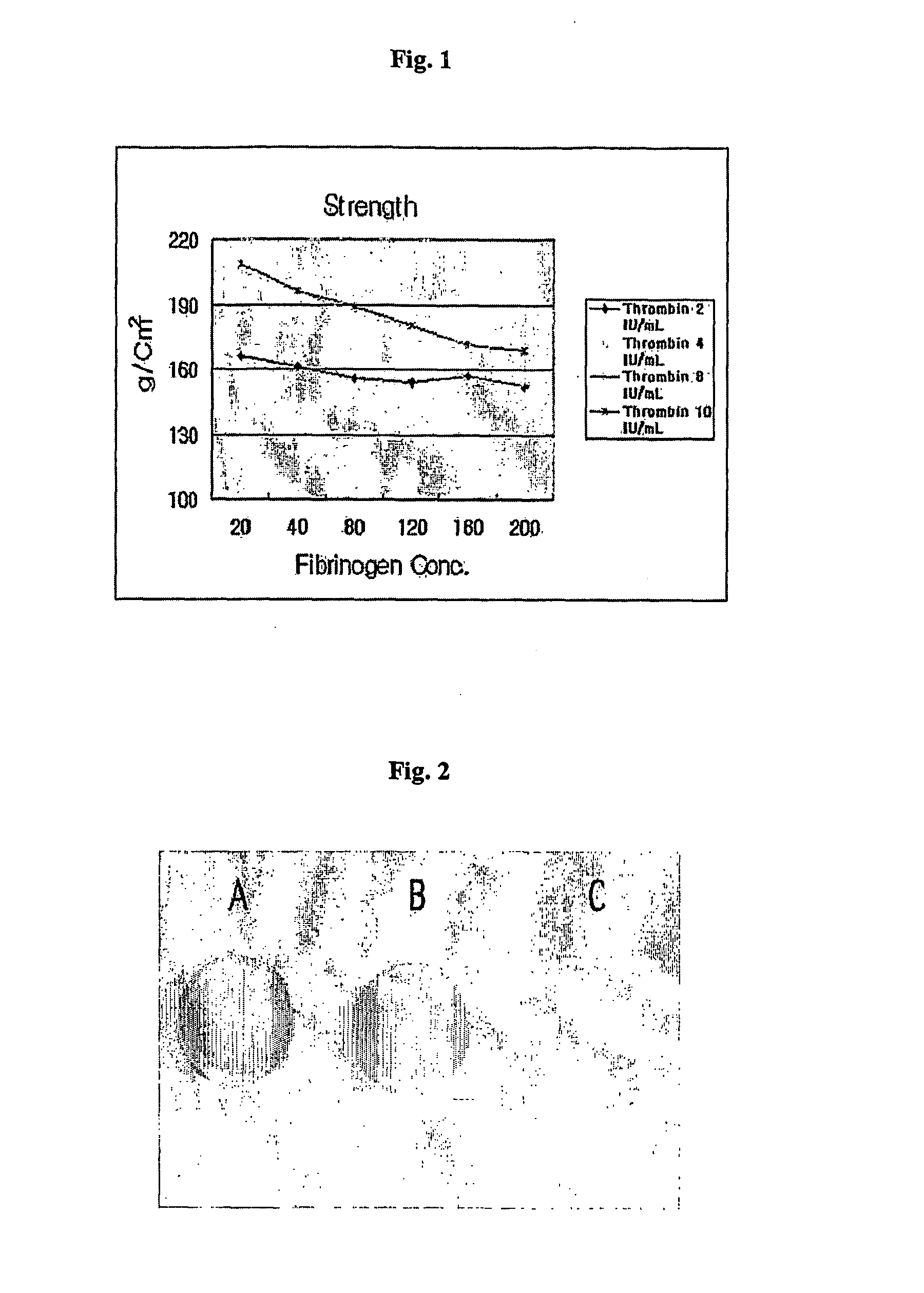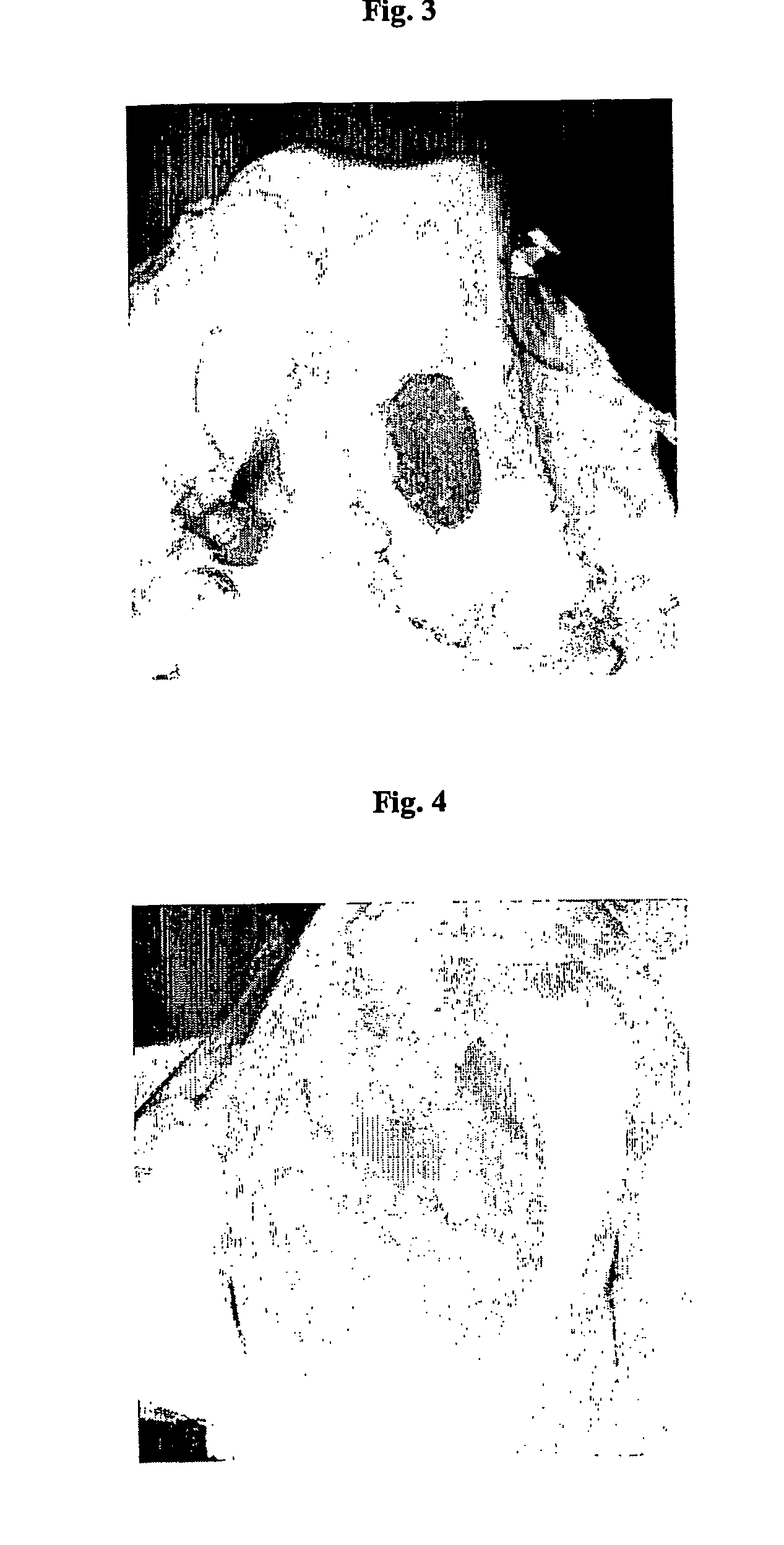Composition of cartilage therapeutic agents and its application
a cartilage and therapeutic agent technology, applied in the field of cartilage therapeutic agent composition, can solve the problems of inability to re-invented to their original state in vivo, inability to carry out normal daily activities, and inability to achieve normal daily activities with severe pain, etc., to achieve the effect of large incision and tim
- Summary
- Abstract
- Description
- Claims
- Application Information
AI Technical Summary
Benefits of technology
Problems solved by technology
Method used
Image
Examples
experimental example 1
[0076] In order to determine appropriate physicochemical properties of various matrices used in transplanting a cartilage therapeutic agent, commercially available lyophilized thrombin was lysed to a concentration of 2 IU / ml to 10 IU / mL.
[0077] 2 IU / ml to 10 IU / mL of thrombin was added to convert fibrinogen, a main matrix, into fibrin.
[0078] Additionally, collagen, hyaluronic acid and GAG were, respectively, added to 0.01 mg / mL to 20 mg / mL, 0.1 mg / mL to 20 mg / mL and 0.1 mg / mL to 20 mg / mL to prepare the respective matrix.
[0079] Each matrix thus prepared was mixed and the resulting hardnes, strength and bending strength thereof were measured.
[0080] First, 1 mL of fibrinogen having a concentration of 20 mg / mL to 200 mg / mL and 1 mL of thrombin having a concentration of 2 IU / mL to 10 IU / mL were mixed and the hardnes and strength of the resulting respective composition were measured.
[0081] In addition, the practical cartilage therapeutic agent and the matrix having the above-mentioned...
experimental example 2
[0088] Polymerization time required to impart the injected fibrinogen and thrombin with strength of 160 to 170 g / cm2, suitable for use as the cartilage therapeutic agent, is shown in Table 1.
TABLE 1Fibrogen Conc.Thrombin Conc. (IU / mL)(mg / mL)24810202252131601184024623618112680281275208179120312299231199160359325269216200379367301290
[0089] That is, a low concentration of thrombin exhibited a slow polymerization time and formed a thin fibrous structure having a pore size of more than about 5 μm, while a high concentration of thrombin exhibited a rapid polymerization time and formed a structure having a small pore size of less than about 1 μm.
[0090] Additionally, it can be seen that the composition composed of thrombin and fibrinogen took 2 to 7 minutes to exhibit strength of 150 to 180 g / cm2, suitable for use in the cartilage therapeutic agent.
example 1
Injection of Cartilage Therapeutic Composition by Arthroscope
[0091] First, cartilage tissue was collected from an animal or human host and chondrocytes were isolated from the tissue. Then, the isolated cells were cultured to prepare a cartilage therapeutic agent consisting of 0.3 to 0.5 mL of DMEM and 9×106 to 1.5×107 chondrocytes.
[0092] Then, as a commercially available medical product, a fibrin sealant was prepared and a DMEM was added to a vial containing lyophilized fibrinogen such that fibrinogen was lysed to a concentration of 100 mg / mL to 200 mg / mL.
[0093] Additionally, lyophilized thrombin was lysed to a concentration of 500 IU / mL and then the resulting thrombin solution was added to the cartilage therapeutic agent in the concentration of 1 IU / mL to 10 IU / mL.
[0094] After completion of the above-mentioned process, a cartilage defect region of the patient's knee was ready for transplantation by trimming the cartilage defect region using the arthroscope.
[0095] Next, the dam...
PUM
| Property | Measurement | Unit |
|---|---|---|
| Density | aaaaa | aaaaa |
| Density | aaaaa | aaaaa |
| Density | aaaaa | aaaaa |
Abstract
Description
Claims
Application Information
 Login to View More
Login to View More - R&D
- Intellectual Property
- Life Sciences
- Materials
- Tech Scout
- Unparalleled Data Quality
- Higher Quality Content
- 60% Fewer Hallucinations
Browse by: Latest US Patents, China's latest patents, Technical Efficacy Thesaurus, Application Domain, Technology Topic, Popular Technical Reports.
© 2025 PatSnap. All rights reserved.Legal|Privacy policy|Modern Slavery Act Transparency Statement|Sitemap|About US| Contact US: help@patsnap.com



